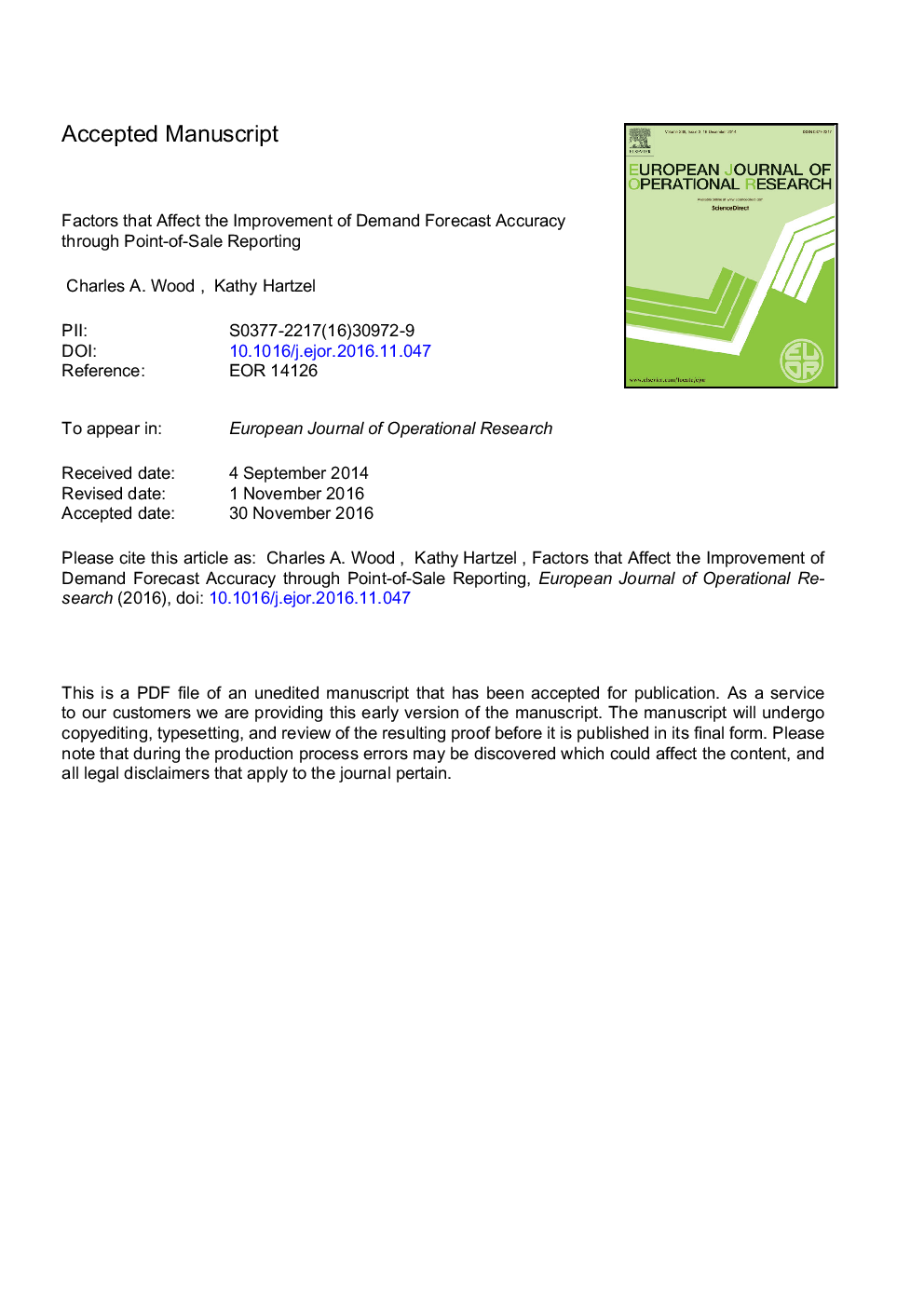| Article ID | Journal | Published Year | Pages | File Type |
|---|---|---|---|---|
| 4959887 | European Journal of Operational Research | 2017 | 32 Pages |
Abstract
Recent research has examined the use of real-time, shared point-of-sale (POS) data in forecasting. Although initial research posited that POS data can improve forecast accuracy, recent research has called some of these findings into question. We identify item order quantity, item order variability, and item order frequency of orders as specific factors that can affect the degree of improvement in POS demand forecasting accuracy when compared to order history-based techniques. Using a hierarchical linear model, we examine 60,651 orders for hundreds of items across 25 different distribution centers. We find a 11.2% overall improvement in using real-time, shared POS data in demand forecasting over order history-based forecasting. However, we find a curvilinear relationship between these improvements and both the order quantity and the item order variability. Additionally, we find that POS based forecasting improvements are greatest (1) when items are not frequently ordered, (2) when there is low variance in the number of distribution center ordering an item each week, and (3) when order quantities are neither relatively high, nor relatively low.
Related Topics
Physical Sciences and Engineering
Computer Science
Computer Science (General)
Authors
Kathleen S. Hartzel, Charles A. Wood,
